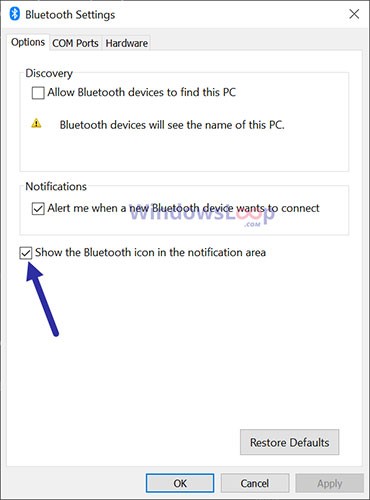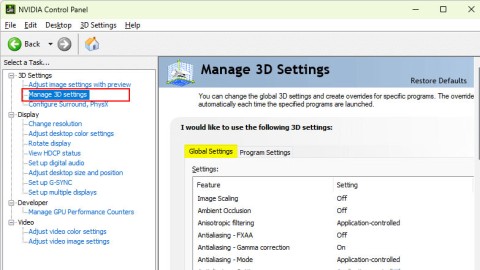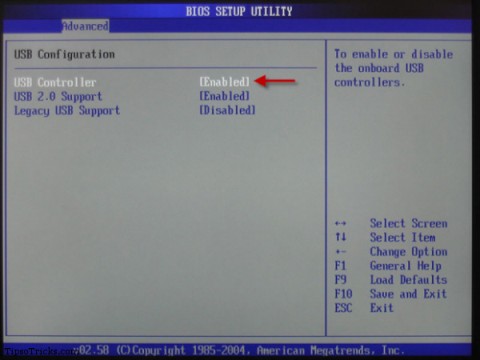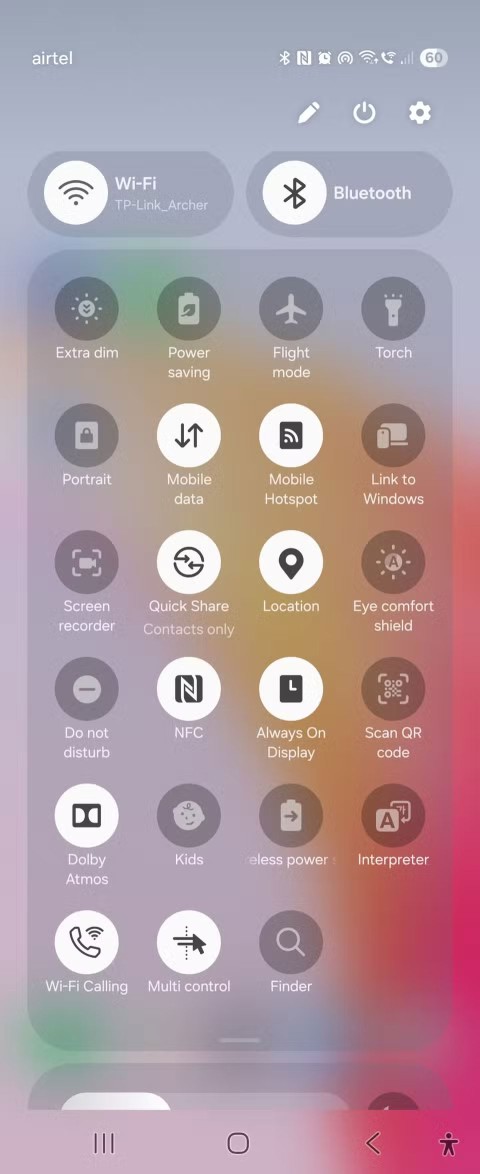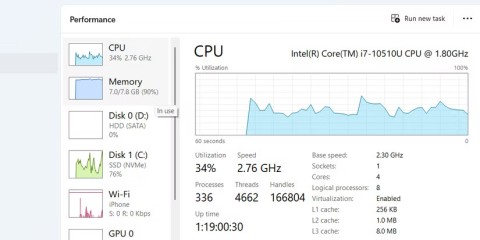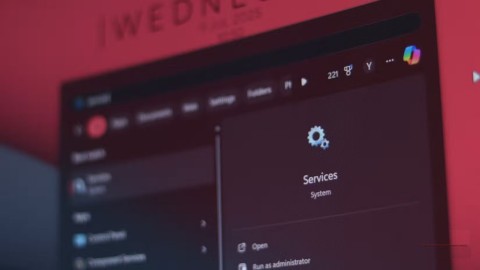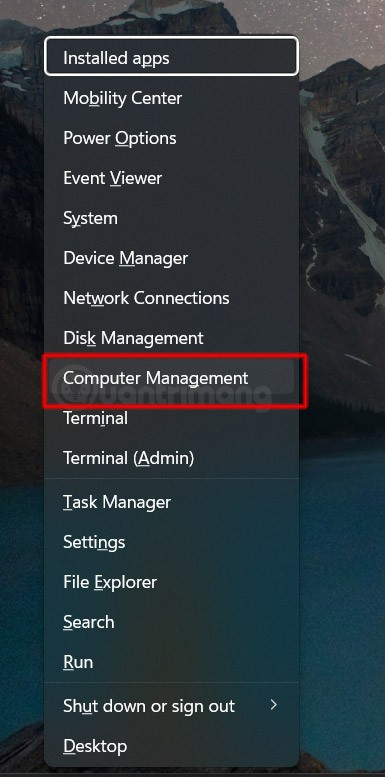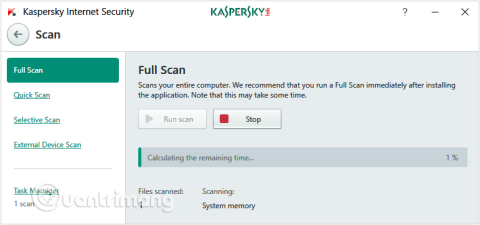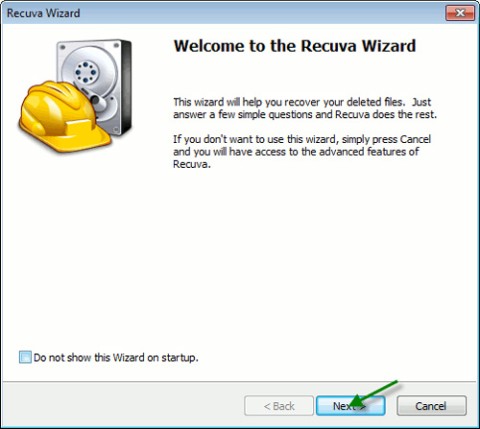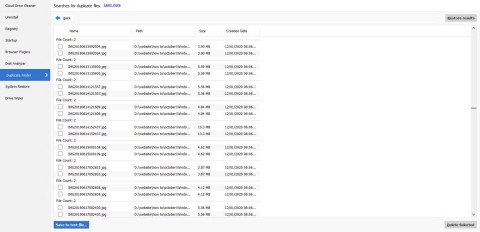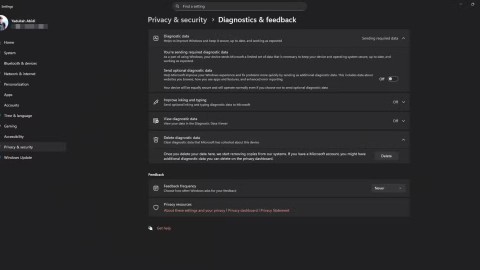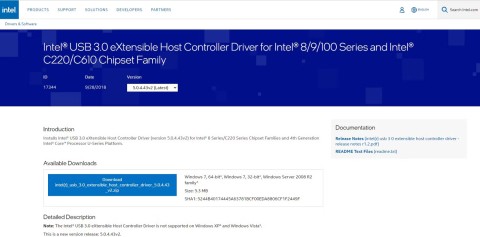Turn off these 7 Windows services to extend battery life!
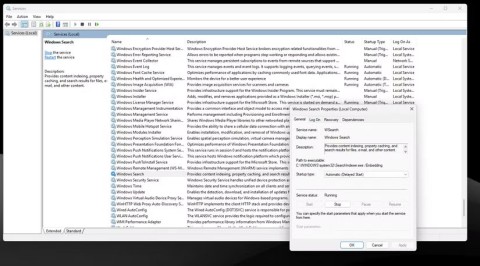
Turning off a few of these services can save you a significant amount of battery life without affecting your daily usage.
When your GPU driver stops working, you may notice it right away. Unfortunately, sometimes a GPU driver update can cause this problem. Here are the first steps you need to take to reinstall your GPU driver, and the methods you can use to start over.
Decide which driver installation or removal method to use
Before uninstalling and reinstalling your GPU driver, it's important to decide which method you want to use. You have two options for installation: Use the manufacturer's GPU driver installer or reinstall the driver through Windows Device Manager.
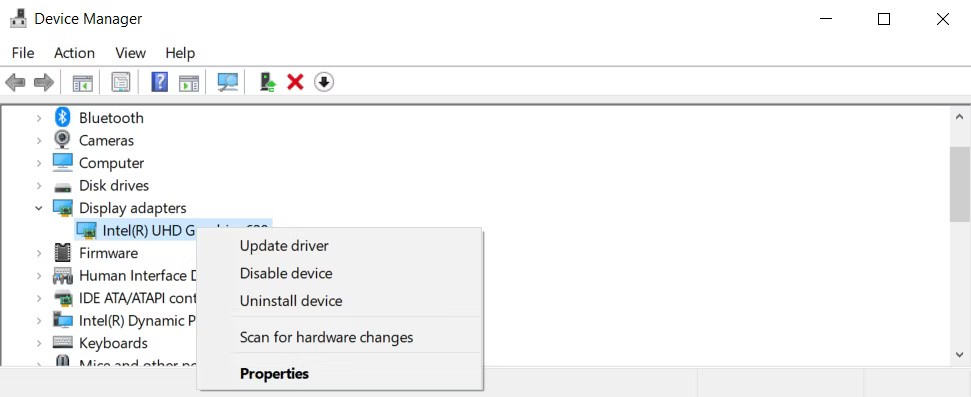
Windows Device Manager is the easiest tool to use, but it has one major drawback: It searches for Windows-certified drivers, and many reputable drivers aren’t necessarily Windows-certified. If you’re planning on installing a manufacturer driver, you should only use this tool to uninstall your existing drivers.
Tip : If you are planning to use Windows Device Manager to reinstall GPU drivers, do not uninstall them.
For manufacturer driver installations, it’s generally best to use the clean install option of the driver. Most drivers that you download from the manufacturer’s official website will include a very simple setup wizard. Just click the prompt, and your new driver should only take a few minutes to install.
Uninstalling drivers is much simpler. In most cases, it's better to uninstall them through Windows Device Manager. But if you have a stubborn driver, Driver Display Uninstaller can help you remove it from your system forever.
In summary, you will need to perform the following steps to uninstall and reinstall your GPU driver:
Uninstall GPU driver using Windows Device Manager
Device Manager is one of many tools for configuring devices connected to your PC and it can update, restore, and remove drivers. Search for Device Manager in the search bar and open the utility.

Then navigate to Display adapters , right-click on the GPU and select Properties .

From there, navigate to the Driver tab. The tab displays the options Update Driver , Roll Back Driver , and Uninstall Device .
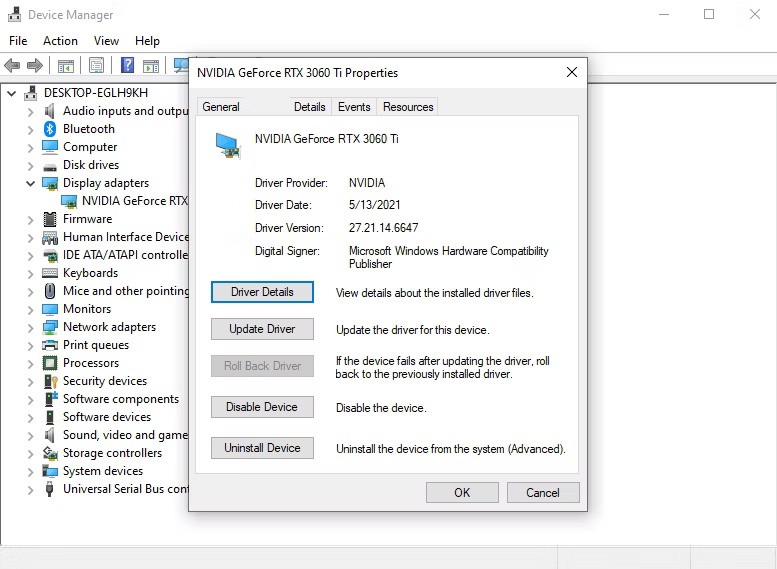
Removing the driver is included in that last option as an optional feature.
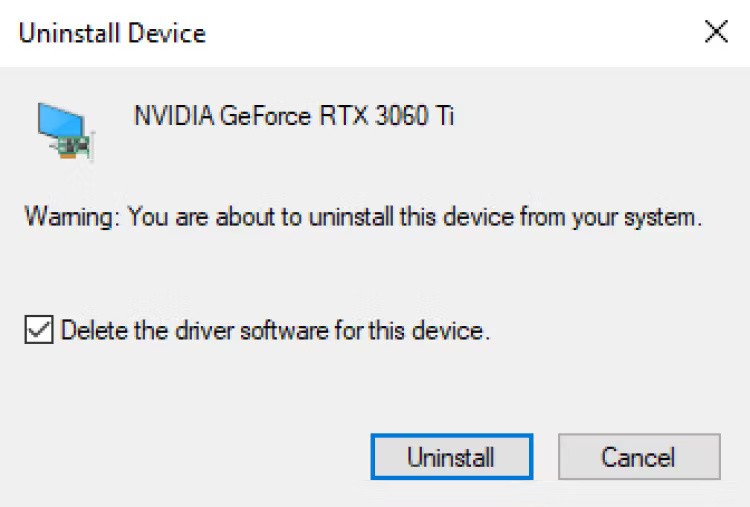
And that’s it. Once you click Uninstall, the old GPU driver will be removed from your computer. If you find that the driver wasn’t completely removed, you may need to use Driver Display Uninstaller to finish the job.
Remove Stubborn GPU Drivers with Driver Display Uninstaller
Driver Display Uninstaller, or DDU, is a favorite method among PC enthusiasts. It is a third-party program developed by Wagnardsoft that supports removing drivers for AMD, Nvidia, and Intel GPUs . DDU is extremely comprehensive and will remove anything or almost anything related to GPU drivers.
To download DDU, go to the Wagnardsoft website and select the one with the most recent date. At the time of writing, the most recent version is 18.0.4.0, as you can see here:
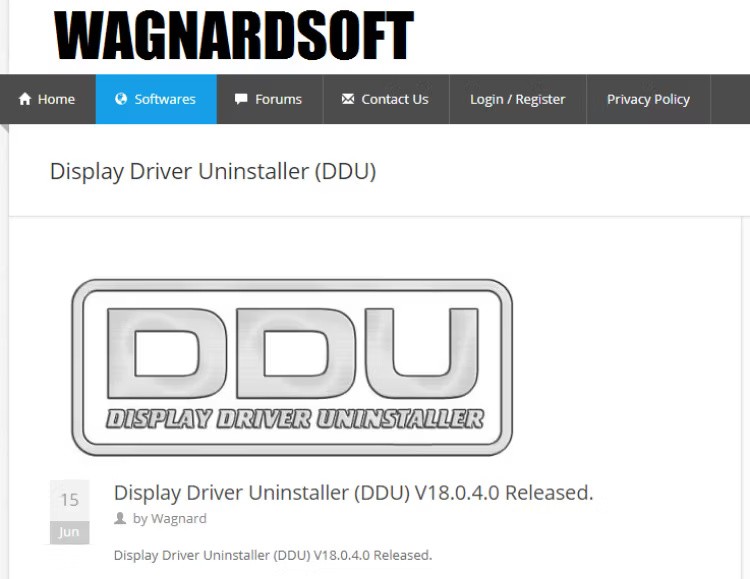
Then, find the entry that says Click here for Download & Support and click on it. You will be taken to another page where you will see the entry that says Official Download Here . Click on it to start the download. You will get an executable file - run that executable and click on Extract .

You will get a folder named DDU v18.0.4.0, depending on the version number. The folder contents look like this:
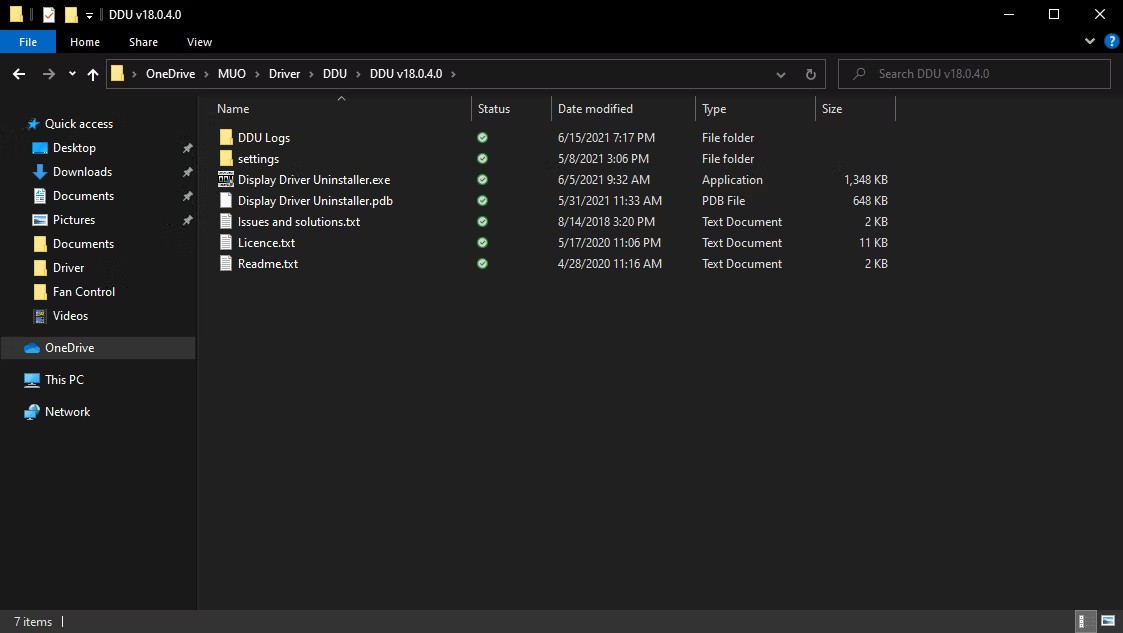
To run DDU, open the folder and run Display Driver Uninstaller.exe. Before you do anything, the application may close some other applications for safety reasons and present you with a list of options:
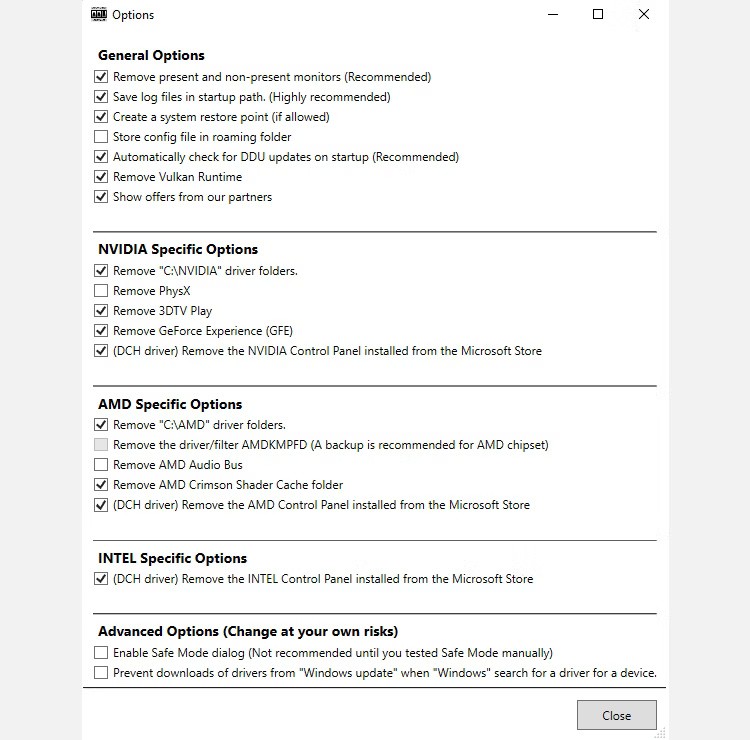
Just click Close . If you are not in Safe Mode, DDU recommends that you enter this mode before removing any drivers. However, Safe Mode is not required to remove drivers. Next, click Select device type and select GPU .

By default, DDU will select one of the GPU drivers to clean, which can cause problems if you have multiple GPUs. If DDU automatically selects the wrong GPU driver, all you need to do is click where it says AMD , Nvidia , or Intel and select the appropriate vendor.
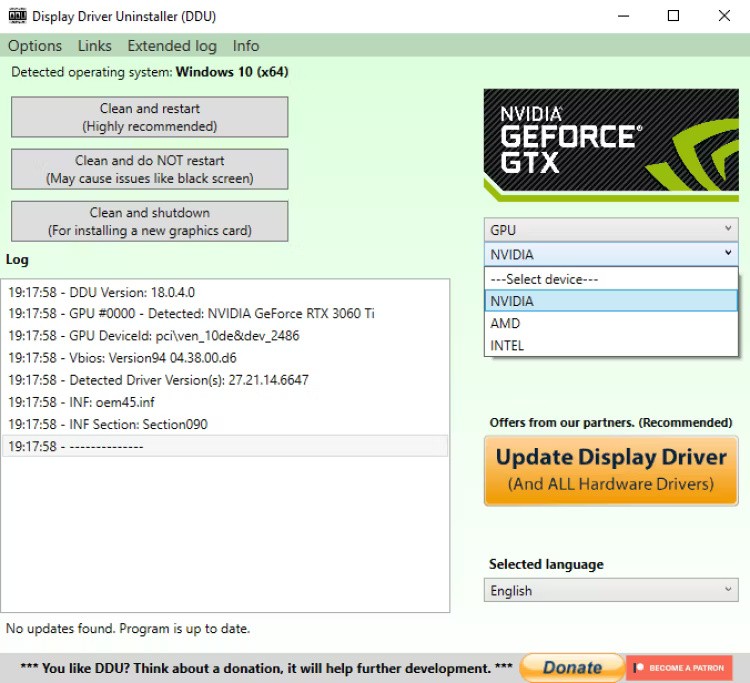
Finally, just hit Clean and restart . DDU will remove your drivers and automatically restart your PC.
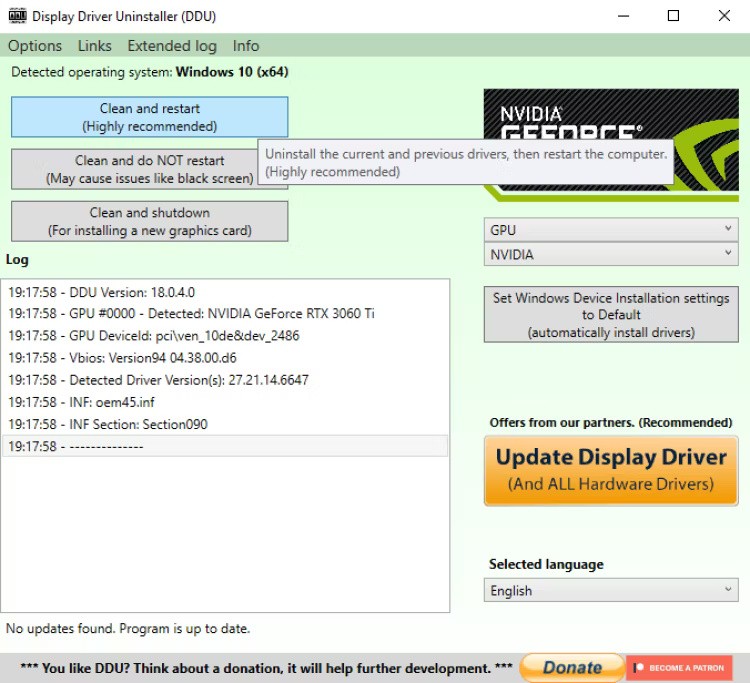
Wagnardsoft doesn't recommend using DDU every time you want to update your drivers, but it can be a useful last resort to fix problems you suspect might be driver-related. It's also useful if you're switching from one GPU vendor to another.
Install new GPU drivers using the manufacturer's installer application
Most GPU drivers will do the job, but if you want the best performance from your PC, use the manufacturer's drivers. If you built your own desktop, you'll want to go directly to AMD, Nvidia, or Intel's website and download the drivers.
If you buy an OEM PC, you can use drivers directly from AMD, Nvidia, or Intel, but it's best to look for drivers provided by the OEM.
Both AMD and Nvidia offer a clean install option when you install their GPU drivers. For AMD users, just run the driver and click through the wizard. You’ll eventually see this nice-looking window:
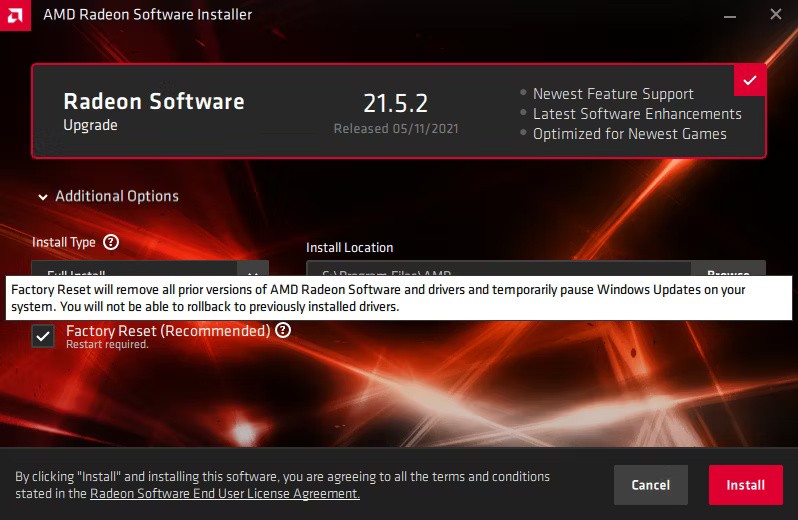
The factory reset option will be selected by default. All that’s left to do is click through the rest of the wizard and wait for it to complete. There’s also a standalone app called AMD Cleanup Utility, although it’s probably more convenient to perform the Factory Reset within the driver wizard.
Nvidia's clean install is also included in the wizard, but it's a little more complicated to get to. Once you've started the installation wizard for your Nvidia driver, you'll first need to select Nvidia Graphics Driver and GeForce Experience or Nvidia Graphics Driver. Then, click Agree and Continue .
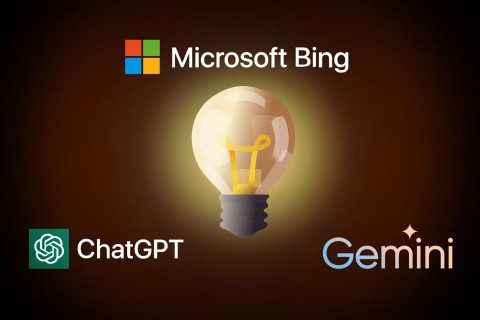
Next, select Custom (Advanced) .
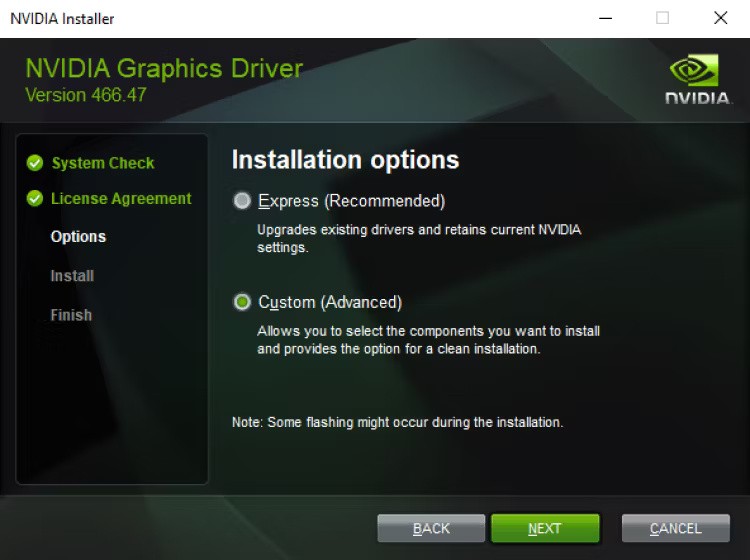
Check Perform a clean installation and select Next .

And that's it. Just click through the rest of the wizard as usual, wait for the installation to complete, and you're good to go.
Update GPU driver using Windows Device Manager
Device Manager is useful for rolling back drivers (allowing you to restore or roll back to a previous version), but it doesn’t have the best method for updating. Its automatic method looks for drivers that are certified by Windows, which means you’ll miss out on some of the better drivers provided by companies like AMD and Nvidia.
However, Device Manager can be useful for reinstalling GPU drivers if you want to keep things simple. You can start by opening Device Manager and expanding the Display Adapters section .

In this section, you'll see your base GPU driver. If you uninstalled it, try restarting your computer - Windows will automatically reinstall the GPU driver when you restart.
Next, right-click on the GPU driver and select Update driver from the options that appear. Then, click Search automatically for drivers and wait for Windows to find the best new GPU driver for your system.
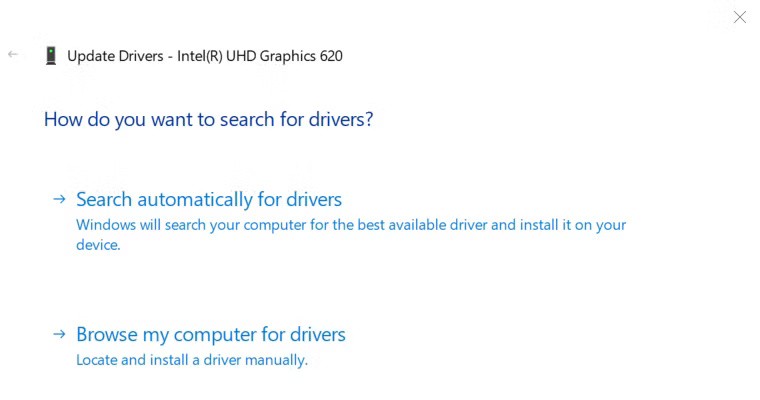
If there are any updates available for your GPU drivers, they will be automatically installed on your system. If not, Windows will show that you have the latest driver version installed. That's all you need to do!
It’s worth noting that when you install GPU drivers using Windows Device Manager, you won’t get any fancy GPU management apps that come with them. Unfortunately, Windows won’t install them. There are Windows Store versions of these apps, but it’s probably best to download them directly from the source.
In short, you'll need to remove your old driver using Windows Device Manager or Driver Display Uninstaller. Once you've done that, getting your GPU back to peak performance is as simple as installing the correct manufacturer driver.
Turning off a few of these services can save you a significant amount of battery life without affecting your daily usage.
From performance monitoring to quick system tweaking, these built-in utilities are as useful as ever.
Error code 0x80004005 is a type of unknown Windows error, whose cause is related to a number of different issues.
If you can't find the Bluetooth icon on the taskbar, follow the steps below to show the missing Bluetooth icon on Taskbar in Windows 10.
Clearing the NVIDIA Shader Cache will reset the system, forcing it to rebuild with new data. Here are instructions for clearing the NVIDIA Shader Cache.
Unlocking USB ports in BIOS is not difficult. However, how to lock computer USB ports? Let's find out with Quantrimang.com!
Being blocked online can be frustrating, whether it's a forum lockout, a game ban, or a temporary IP restriction. The good news is that you don't always need a VPN to get around these restrictions.
When your computer crashes, seeing how everything is running can help you troubleshoot. And when everything is working, this information can also help you optimize your system.
Windows laptops aren't known for their battery life, at least not without some tweaking. But these tips will help your laptop last all day without having to find a power outlet.
Windows 10/11 includes a hidden Administrator account that you can use to manage all the important data on your computer. Let's see how to enable or disable the built-in Administrator account on Windows 10/11!
System Service Exception or SYSTEM_SERVICE_EXCEPTION is one of the BSOD errors (blue screen of death errors). System Service Exceptions errors occur quite commonly and continuously.
In the following article, we will present the basic operations to recover deleted data in Windows 7 with the support tool Recuva Portable. With Recuva Portable, you can store it in any convenient USB, and use it whenever needed. The tool is compact, simple, easy to use with some of the following features:
CCleaner scans for duplicate files in just a few minutes, then lets you decide which ones are safe to delete.
Windows doesn't come with security set up by default, which means there are some default settings you need to change.
USB devices have become indispensable in everyday life, allowing us to connect a wide variety of essential hardware to our PCs.


